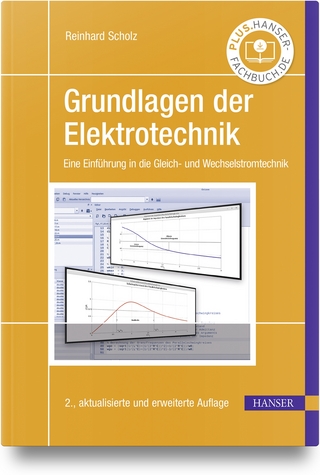
Magnetic Hysteresis
Wiley-IEEE Press (Verlag)
978-0-7803-4719-9 (ISBN)
- Titel ist leider vergriffen;
keine Neuauflage - Artikel merken
Understanding magnetic hysteresis is vitally important to the development of the science of magnetism as a whole and to the advancement of practical magnetic device applications. Magnetic Hysteresis, by acclaimed expert Edward Della Torre, presents a clear explanation of the connection between physical principles and phenomenological hysteresis. This comprehensive book offers a lucid analysis that enables the reader to save valuable time by reducing trial-and-error design. Dr. Della Torre uses physical principles to modify Preisach modeling and to describe the complex behavior of magnetic media. While Pretsach modeling is a useful mathematical tool, its congruency and deletion properties present limitations to accurate descriptions of magnetic materials. Step-by-step, this book describes the modifications that can overcome these limitations. Special attention is given to the use of feedback around a Preisach transducer to remove the congruency restriction, and to the use of accommodation and aftereffect models to remove the deletion restriction. Magnetic state selection rules are introduced to couple scalar Preisach models to form a vector model. Magnetic Hysteresis is indispensable reading for engineers, physicists, and materials scientists who want to gain a better understanding of hysteresis losses and create more energy-efficient motor designs.
Edward Della Torre is professor of engineering and applied science at The George Washington University, Washington, D.C. Dr. Della Torre’s principal research is in the analysis of magnetic materials by numerical micromagnetic modeling and Preisach modeling. His studies of accommodation and aftereffect led to the accommodation model in 1994 and the Preisach-Arrhenius model in 1998. The simplified vector model, also presented in 1998, has made vector calculations possible in real time. These extensions of the Preisach formalism developed by Dr. Della Torre have been used in the field to understand and quantitatively predict the behavior of magnetic materials. A Fellow of the Institute of Electrical and Electronics Engineers and the American Physical Society, Dr. Della Torre is currently president of the IEEE Magnetics Society. He has published extensively in the field and is the coauthor of two books, The Electromagnetic Field (Allyn and Bacon, 1969) and Magnetic Bubbles (North Holland, 1975).
Preface. Acknowledgments.
Chapter 1: Physics of Magnetism.
1.1 Introduction.
1.2 Diamagnetism and Paramagnetism.
1.3 Ferro-, Antiferro-, and Ferrimagnetic Materials.
1.4 Micromagnetism.
1.5 Domains and Domain Walls.
1.5.1 Bloch Walls.
1.5.2 Neel Walls.
1.5.3 Coercivity of a Domain Wall.
1.6 The Stoner-Wohlfarth Model.
1.7 Magnetization Dynamics.
1.7.1 Gyromagnetic Effects.
1.7.2 Eddy Currents.
1.7.3 Wall Mobility.
1.8 Conclusions.
References.
Chapter 2: The Preisach Model.
2.1 Introduction.
2.2 Magnetizing Processes.
2.3 Preisach Modeling.
2.4 The Preisach Differential Equation.
2.4.1 Gaussian Preisach Function.
2.4.2 Increasing Applied Field.
2.4.3 Decreasing Applied Field.
2.5 Model Identification: Interpolation.
2.6 Model Identification: Curve Fitting.
2.7 The Congruency and the Deletion Properties.
2.8 Conclusions.
References.
Chapter 3: Irreversible and Locally Reversible Magnetization 53
3.1 Introduction.
3.2 State-Independent Reversible Magnetization.
3.3 Magnetization-Dependent Reversible Model.
3.4 State-Dependent Reversible Model.
3.5 Energy Considerations.
3.5.1 Hysteron Assemblies.
3.6 Identification of Model Parameters.
3.7 Apparent Reversible Magnetization.
3.8 Crossover Condition.
3.9 Conclusions.
References.
Chapter 4: The Moving Model and the Product Model.
4.1 Introduction.
4.2 Hard Materials.
4.3 Identification of the Moving Model.
4.3.1 The Symmetry Method.
4.3.2 The Method of Tails.
4.4 The Variable-Variance Model.
4.5 Soft Materials.
4.6 Henkel Plots.
4.7 Congruency Property.
4.7.1 The Classical Preisach Model.
4.7.2 Output-Dependent Models.
4.8 Deletion Property.
4.8.1 Hysteresis in Intrinsically Nonhysteretic Materials.
4.8.2 Proof of the Deletion Property.
4.9 Conclusions.
References.
Chapter 5: Aftereffect and Accommodation.
5.1 Introduction.
5.2 Aftereffect.
5.3 Preisach Interpretation of Aftereffect.
5.4 Aftereffect Dependence on Magnetization History.
5.5 Accommodation.
5.6 Identification of Accommodation Parameters.
5.7 Properties of Accommodation Models.
5.7.1 Types of Accommodation Processes.
5.8 Deletion Property.
5.9 Conclusions.
References.
Chapter 6: Vector Models.
6.1 Introduction.
6.2 General Properties of Vector Models.
6.3 The Mayergoyz Vector Model.
6.4 Pseudoparticle Models.
6.5 Coupled-Hysteron Models.
6.5.1 Selection Rules.
6.5.2 Them2Model.
6.5.3 The Simplified Vector Model or m Model.
6.6 Loss Properties.
6.7 Conclusions.
References.
Chapter 7: Preisach Applications.
7.1 Introduction.
7.2 Dynamic Effects.
7.3 Eddy Currents.
7.4 Frequency Response of the Recording Process.
7.5 Pulsed Behavior.
7.5.1 Dynamic Accommodation Model.
7.5.2 Single-Pulse Simulation.
7.5.3 Double-Pulse Simulation.
7.6 Noise.
7.6.1 The Magnetization Model.
7.6.2 The Effect of the Moving Model.
7.6.3 The Effect of the Accommodation Model.
7.7 Magnetostriction.
7.8 The Inverse Problem.
7.9 Conclusions.
References.
Appendix A: The Play and Stop Models.
Appendix B: The Log-Normal Distribution.
Appendix C: Definitions.
Index.
About the Author.
| Erscheint lt. Verlag | 17.2.2005 |
|---|---|
| Sprache | englisch |
| Maße | 158 x 235 mm |
| Gewicht | 499 g |
| Themenwelt | Naturwissenschaften ► Physik / Astronomie ► Elektrodynamik |
| Technik ► Elektrotechnik / Energietechnik | |
| Technik ► Maschinenbau | |
| ISBN-10 | 0-7803-4719-6 / 0780347196 |
| ISBN-13 | 978-0-7803-4719-9 / 9780780347199 |
| Zustand | Neuware |
| Haben Sie eine Frage zum Produkt? |
aus dem Bereich


